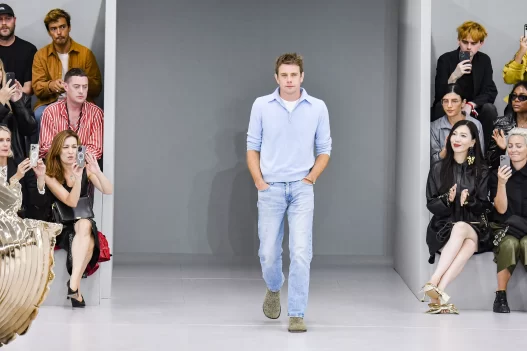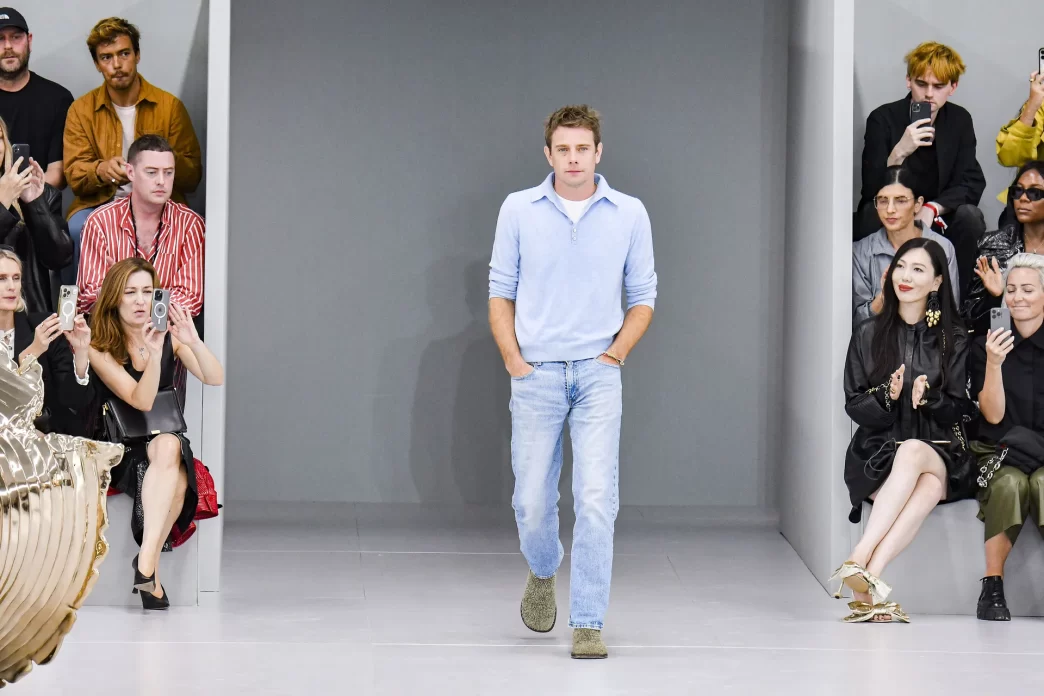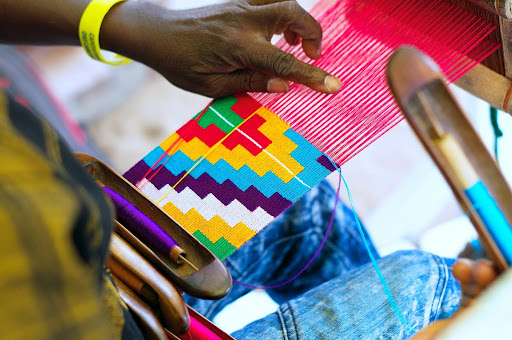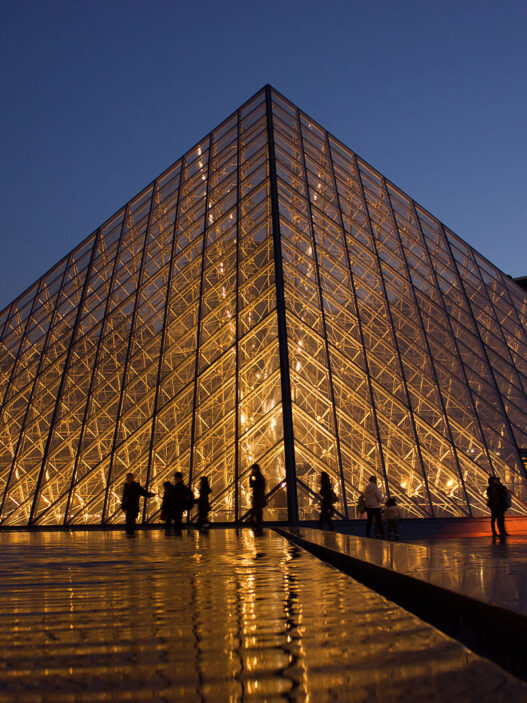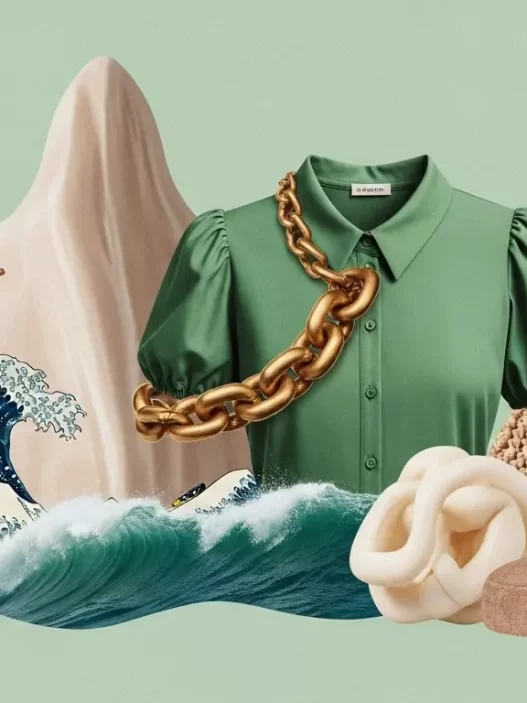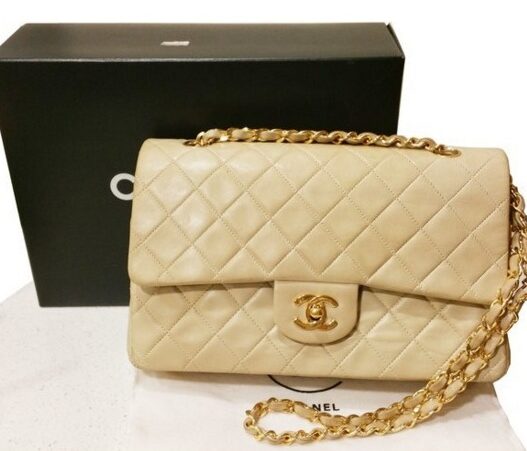“Voir grand, sans oublier les fondations.”
Dream big, but never forget the foundations.
When Jonathan Anderson unveiled his first Dior show as the house’s sole creative director, it wasn’t merely another chapter in fashion’s endless carousel of appointments. It was a restructuring — not of hemlines, but of hierarchy. For the first time since Monsieur Dior himself, a single creative vision commands every corner of the house: women’s, men’s, couture, and accessories. Yet the runway was only the visible half of the performance; the real drama unfolded in the fine print, in law, in contracts, in the delicate transmutation of authorship and accountability that now governs the empire of luxury.
The Weight of Legacy, the Scale of Authority
For a house like Dior, legacy is both an asset and a burden. Each collection must whisper its past while articulating its future — an act of translation more than invention. Anderson’s new role transforms that dialogue into a monologue. The brand is effectively placing its multi-billion-euro identity in the hands of one designer, trusting that his creative and cultural instincts will remain both contemporary and canonical.
From a legal standpoint, this consolidation of power is monumental. Creative direction is no longer just artistic license; it is governance. The creative director’s decisions now carry fiduciary implications — shaping not just the silhouette of a dress but the trajectory of a listed luxury conglomerate. Dior’s appointment of Anderson signals confidence, but also vulnerability: if vision can unify, it can just as easily destabilize.
The Contract Beneath the Couture
Luxury houses are built as much on paperwork as on craftsmanship. Somewhere behind the silk, there lies a contract — clauses on moral rights, exclusivity, confidentiality, and what brands euphemistically call “house codes.”
For Anderson, those codes are both muse and mandate. His contract likely outlines the extent to which he may reinterpret or reinvent Dior’s iconic motifs — the Bar jacket, the cinched waist, the sculptural femininity. Such clauses don’t merely regulate aesthetics; they safeguard identity. If heritage is Dior’s greatest intellectual property, then the creative director becomes its appointed custodian.
The real legal intrigue lies in the question: how much deviation can the contract bear? Fashion thrives on reinvention, yet brands depend on recognisability. When Anderson stretches Dior’s grammar — elongating a silhouette, abstracting a logo, subverting proportion — does he remain faithful to the brand’s DNA, or does he breach it? That line is policed less by courts and more by corporate counsel, internal compliance teams, and the invisible negotiations between creative freedom and commercial obligation.
The Fragility of Singular Vision
One vision unifying an empire sounds cinematic — but the law finds such concentration risky. When authority converges in a single figure, so does liability. Anderson now stands as the creative, symbolic, and managerial face of Dior’s global image. If an advertising campaign misfires, if a cultural reference provokes controversy, or if sustainability audits uncover inconsistencies, accountability will follow the same thread back to him.
Historically, creative directors have operated in a diffuse, shared responsibility. Today, Dior’s model compresses it. The company’s bold experiment is that one consciousness can govern every creative channel while maintaining operational coherence. Yet in doing so, Dior transforms its creative director from artist to executive — one whose choices are inseparable from the brand’s legal and ethical posture.
Heritage as Intellectual Property
Heritage, for a house like Dior, is not nostalgia. It is an enforceable asset. Every pattern, line, and motif — from the iconic Bar jacket to the logo’s typography — exists within a protected ecosystem of intellectual property. What makes Anderson’s appointment so interesting is that he is tasked with evolving this archive without eroding it.
Legally, this means balancing innovation against dilution. The trade dress of Dior —the intangible impression of shape and style that signals origin —is what courts recognise as a form of brand identity. A misstep could, theoretically, weaken that distinctiveness. Too much novelty and Dior risks losing the legal clarity that allows it to defend itself against imitation. Too much fidelity, and it becomes a museum piece.
In this sense, Anderson’s work is a dialogue with the law itself. Every reinterpretation of a Dior code asks: can evolution be copyrighted? Can reinvention be trademarked? The answers, much like couture, must be constructed case by case, seam by seam.
Accountability Behind the Atelier
Beyond authorship lies accountability. A creative director’s contract now extends far beyond sketches and fittings. It binds them to ethical oversight, to sustainability commitments, to public representation. In an era where brand responsibility is litigated in both courts and public opinion, Anderson’s role inherits Dior’s triumphs and its potential transgressions alike.
The legal infrastructure of luxury has had to evolve accordingly. Major houses now employ in-house legal teams specializing in creative contracts, IP enforcement, labour compliance, and reputation management. The modern atelier is as much a site of regulation as of imagination. And when the entire creative mandate flows through one mind, those mechanisms must become even sharper.
The Law of Luxury: Beyond Aesthetics
This moment in fashion marks a shift from artistic collaboration to corporate authorship. The Dior–Anderson partnership functions almost as a living case study in creative sovereignty: how far can one designer legally stretch a brand’s image while still serving its shareholders, its artisans, and its founding mythology?
The power structure of luxury fashion has always been monarchic, but now it is legally codified as such. Anderson’s Dior is a reminder that, in this industry, creative freedom is never absolute — it is contractual, conditional, and constantly negotiated.
The Verdict
In the end, Dior’s greatest experiment is not aesthetic but structural. It is testing whether one person can legally, ethically, and artistically embody an entire maison without fracturing it. Anderson’s success will depend not only on what appears on the runway but on how seamlessly his vision integrates with the machinery of law and legacy that underpins it.
When one man becomes the house, he inherits not only its glory but its governance. And perhaps that is the quiet brilliance of Dior’s gamble: that in a world obsessed with image, it is still the fine print and not the fabric that decides who truly holds the power.







